By Tommy Clarkson from the December 2013 Edition
Ravenala madagascariensis
Family: Strelitziaceae
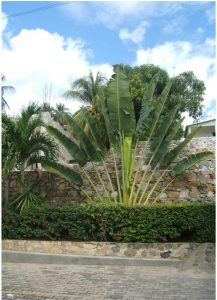
(Also known as Traveler’s sometimes spelled with two ‘l’s – Tree, Palma de Viahero, or Nepal Laburnum)
This highly recognizable and very unique ornamental “palm” is not a palm at all. Furthermore, from the outset, let’s dispel the myth that they orient themselves toward the sun as, simply stated, they don’t!
There remains a bit of contention among authorities as to familial links. Some still classify this plant as a member of the banana family; others contend that they are, in fact, part of the bird-of-paradise group. While Ravenala consists of a solitary species in the Strelitziaceae family, we do know for sure that it is rather closely related to the southern African Strelitzia and the South American genus Phenakospermum. All things considered, however, it all makes for a most interesting, internationally inclined, family “tree” (groan)!
Like so many highly unique plants, this treelike herb originated in Madagascar where they grow to nearly thirty meters high. However, by nature (who else?) they are slow growers.
It derives its name from its stem sheaths that hold rainwater – purportedly, a source of emergency drinking water for (you guessed it) parched throated travelers. Borne on its long petioles are very large leaves which look like the slats of a giant Chinese fan or monstrous, gray-green Peacock’s tail. Each may reach three meters long and up to fifty centimeters in width and together they grow in a distinctive single plane crown. These are paddle shaped, with imbricate (overlapping) bases at the top of their stems. Spreading wide, they present themselves best in a more expansive landscape.
Domesticated, this tree only reaches heights of around 18-20 meters. And, as it grows, the lower leaves, ultimately, fall off exposing a fibrous, palm-like trunk. Quite the eye-catcher, when planted these should be arranged in such a manner as to showcase their quite striking symmetry past which I whistle when I walk! (Only the old with good memories and a bit of twisted sense of humor might get that awful pun!) However, their volunteer offshoots have no respect for the planters careful and precise efforts, requiring their removal and re-planting.
During early years, its trunk is underneath the ground. However, as the Traveler’s palm matures its, previously mentioned, brown rigid trunk emerges. The palm-like trunk can grow to .3 meters or more in diameter and displays distinctive trunk leaf scar rings. Above, the colors of its highly distinctive fan leaves vary from green tipped to stem ends which are yellow.
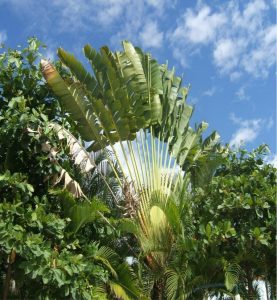
and this one is not even remotely full grown!
The Traveler’s palm produces small, bisexual flowers in green stiff bracts. However, it takes nearly ten years before this exotic plant starts to flower but once it does it does so all year round. The large white and green flowers borne in seven to twelve folded, greenish, boat-shaped bracts – are quite similar to those of its bird-of -paradise relatives, only larger. The fruits are brown and the seeds (which are edible) are blue
The plant requires a sunny spot, but not full sun until it is larger. Three times during the growing season of spring, summer and fall, it responds well to fertilizer, especially if it is high in nitrogen which will help produce better growth and foliage. Like us, for good health, they need water regularly.
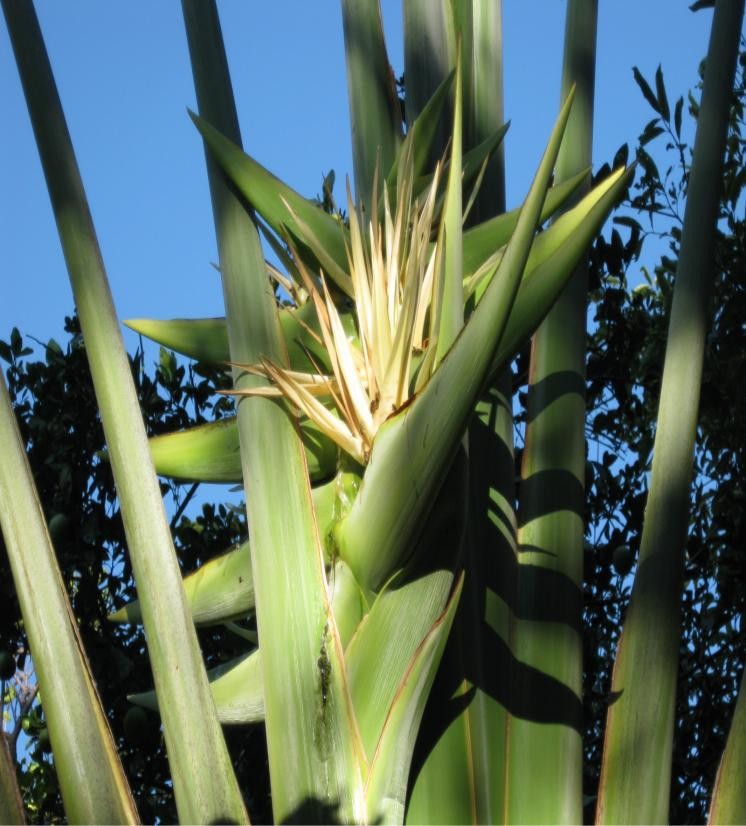
It can tolerate sandy/clay soils with good drainage but much prefers rich, moist and loamy soils. But, keep in mind, when looking for the right location to plant your
Traveler’s Palm, it requires a somewhat protected area as like its banana cousin – brisk winds can shred the leaves.
Like us, bees, butterflies and birds also find the Traveler’s Palm to be alluring. Disorderly, new growth from self-sown seeds and suckers can form unsightly clumps. It is up to us it caretakers to maintain its attractiveness by removal of these new growths
This striking plant makes any area become a centerpiece of attention. To fully enjoy this, one of the more unique and larger of tropical plants – dead leaves should be cut off and not left hanging. But, remember, be careful where you plant it as its expansive fan is a real view blocker!
Lastly, one final bit of folk lore. Supposedly, “i f a traveler stands directly in front of a traveler’s palm and makes a wish in good spirit – that wish will definitely come true.” Try it. What have you to lose?
For back issues of “Roots”, gardening tips, tropical plant book reviews and videos of numerous, highly unique eco/adventure/nature tours, as well as memorable “Ultimate Experiences” such a Tropical Garden Brunches and Spa Services, visit www.olabrisagardens.com .
Download the full edition or view it online
Manzanillo Sun’s eMagazine written by local authors about living in Manzanillo and Mexico, since 2009
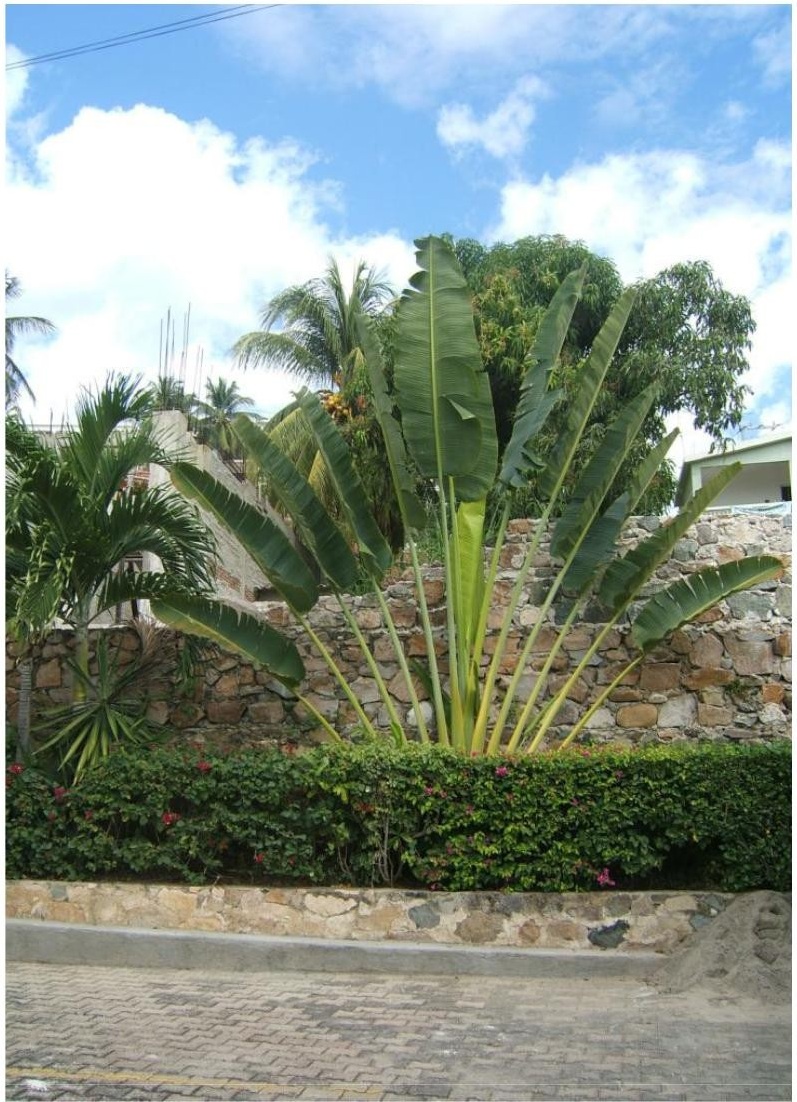

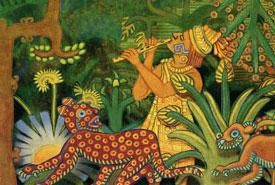
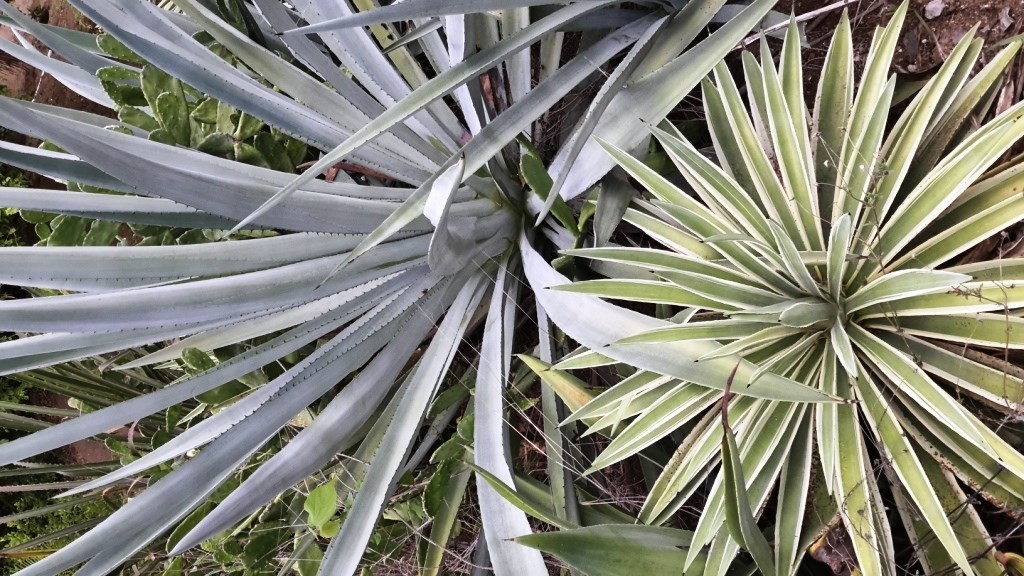
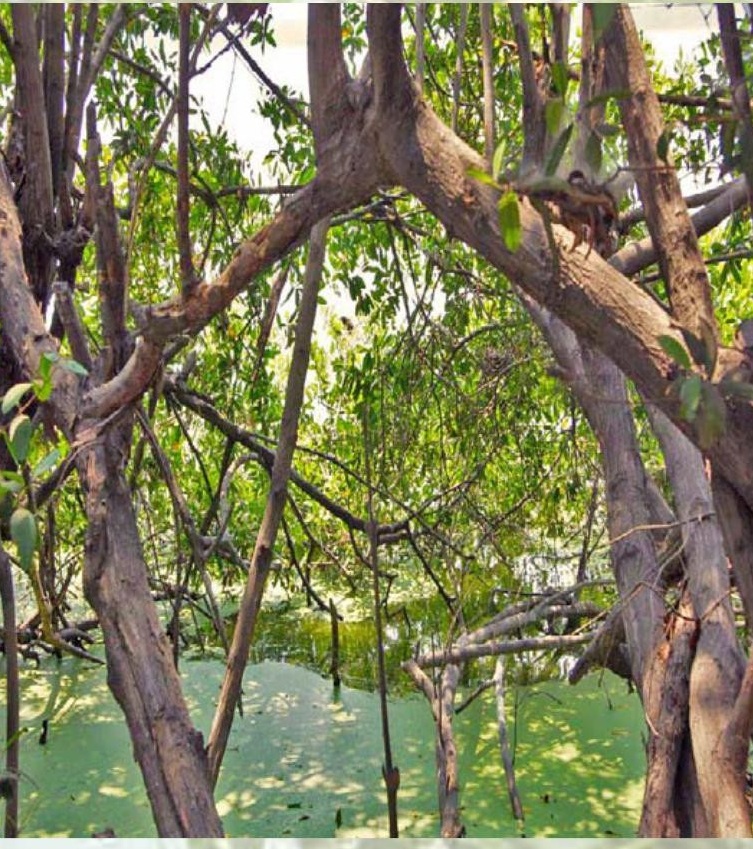
You must be logged in to post a comment.